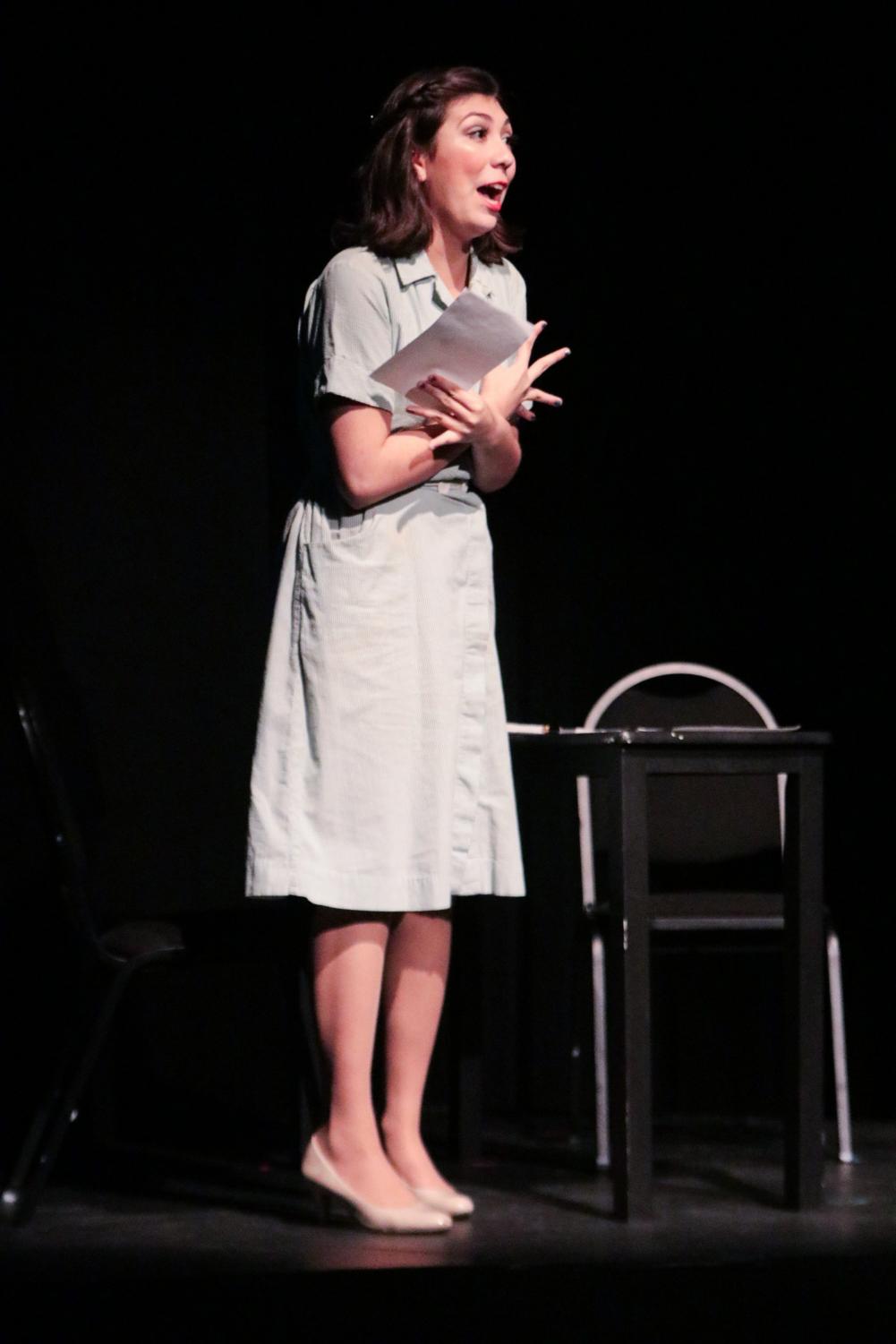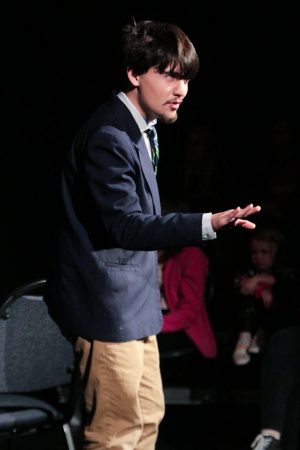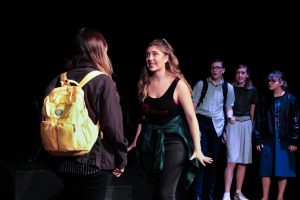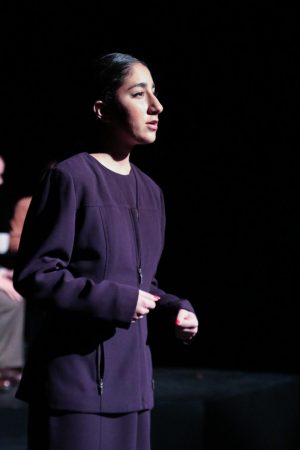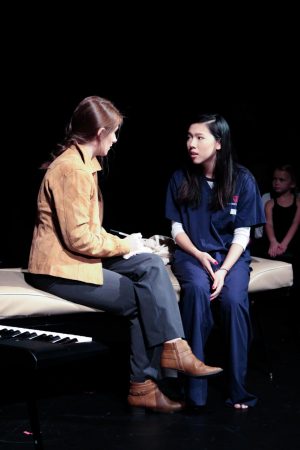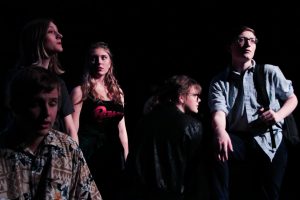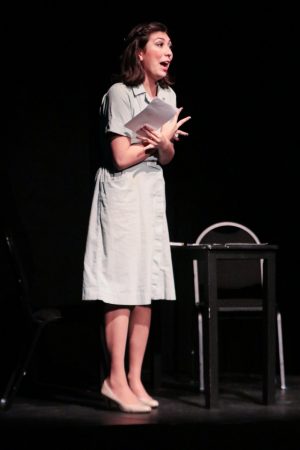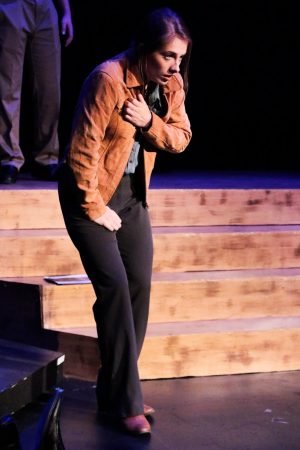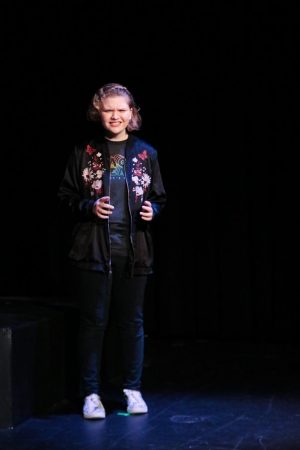‘Trap’ Captivates Audience with Intriguing Mystery
October 16, 2019
Audience members during Westwood Theatre’s four showings of Trap on Thursday, Oct. 11, Friday, Oct. 12, and two shows on Saturday, Oct. 13 at the Westwood Black Box, experienced a wave of exhilaration and excitement as they enjoyed the performance. All four showings were sold out, indicating a successful run of this years fall show.
The show encompasses a puzzling showcase of a certain case about a deadly high school play where all but one person fell unconscious. The story begins at Menachap, California and begins with an explanation of the incident at the “Oak Box Theater” where the play was being shown. From there they draw on the haunted aspects of the theater, including instances from three other deaths within the theater itself, drawing on the wickedness behind the incident. The story progresses into modern day, where high school students are being preyed on by humanoid monsters that feed on the fear of their prey, known as the Paradox.
“My favorite storyline was actually the 1940s scene,” Nicole Boisseau ‘20 said, “even though it didn’t end up directly affecting the outcome of the play. I just thought that section was really well written, and Katya [Lopez ‘20] absolutely killed it in that green dress and with literally drowning herself on stage.”
Eventually, the show transforms into reality through previously selected audience members that participate in the play itself, to further extend this fear, that these “terrors” are actually a reality. They show itself contained so many twists and turns and betrayals and treachery that even the audience themselves begin to doubt what was real and what was not.
“It’s really different from the rest of the productions I’ve been in because it’s very audience interactive and the characters in the story gradually break the fourth wall.” Lucy Wang ‘20 said. “It’s actually very fun to get to spook people.”
Through creating accounts of the case through video interviews, call records, emails, newspaper articles and onsite recounts of the experience, the performers create an aura of discontent and anxiety within the audience members.
“The interviews and records allowed for some information to be withheld from the audience until it was necessary to the plot,” Rachel Rusch ‘20 said. “which added fear because the audience didn’t fully understand what was going on. I think this was a really great aspect of the show because the author, Stephen Gregg, really used irony to his advantage and added to the mystery and creepiness of the show.”
Other additions such as including pre-show posters that aligned with the situations in the play itself and “lighting malfunctions” that were later explained to be included in the storyline of the show, further perpetuated the fear in the viewers.
“I think the most fascinating part of the show that wasn’t “planned” for me was how at the beginning,” Rusch said. “Mrs. Coats tells the audience that there is a problem with the lights and that will cause a delay in our starting time. It was so cool, because backstage our technicians actually got to act as a part of the show. Later on, the audience realizes that the lighting problems were actually planned and it’s such a creative way to instill fear in the audience.”
On top of the captivating storyline, Trap also contained various elements that added to the overall ominous aura of the play. From eerie music to create an atmosphere of danger to playful props that indicated the character’s role, were all included to create a successful show. The lighting also seemed to be a central part of the show itself where students Trevor Clift ‘20, Sofia Stanfield ‘23, and Kiera Toney ‘20 provided intense spotlights and lighting changes that further indicated the stress of the situation at hand.
“I loved all of the technical aspects of the show,” Boisseau said. “Our technicians worked so hard and I think it really paid off in building the atmosphere of the show. There’s something particularly creepy about the use of technology in a live performance where the rest of the stage is dark, in the same way that black mirror invokes a different kind of fear than something like the conjuring.”
Catch the next Westwood Theatre production at the fall children’s show The Treasures of El Mundo on Friday, Nov. 18 at 5:30 p.m. and 7:00 p.m. at the Raymond Hartfield Performing Arts Center.







